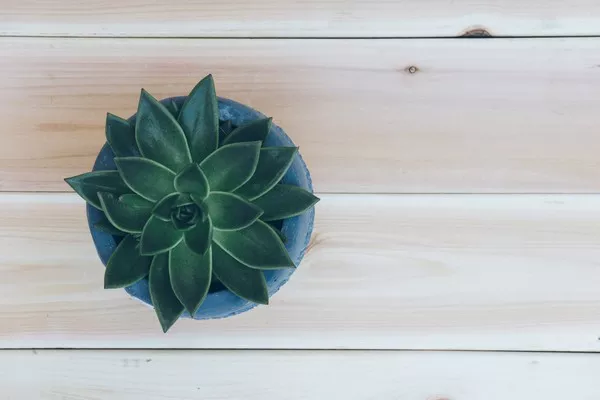Succulents have taken the gardening world by storm with their striking appearance and low-maintenance requirements. One of the key factors to consider when growing succulents is sunlight. While some succulents can adapt to lower light conditions, many of them thrive when bathed in full sun.
Understanding Sunlight Needs of Succulents
Before we delve into the specific succulent species that love full sun, it’s essential to understand the significance of sunlight in the lives of succulents. Succulents have evolved to thrive in arid regions with intense sunlight, making them well-suited for sunny conditions. In their natural habitat, they have developed various adaptations to survive prolonged periods of drought and high temperatures. These adaptations include water storage in leaves and stems, which allows them to endure the harsh sun. Sunlight is not just a preference for many succulents; it is a necessity for their health and growth.
Full Sun Requirements
Full sun for succulents typically means they need at least six hours of direct sunlight each day. In this level of sunlight, they can photosynthesize efficiently, enabling them to produce food and grow vigorously. While they can tolerate some shade, succulents that receive less sunlight than they need may become leggy, less vibrant in color, and may not display their characteristic shapes and forms as robustly. For those who want to see their succulents at their best, providing full sun is a key requirement.
Popular Sun-Loving Succulent Species
Agave: Agave is a genus of succulent plants that thrive in full sun. These striking rosette-forming succulents are known for their bold, architectural shapes and are often the centerpiece of xeriscape gardens.
Echeveria: Echeverias are some of the most popular sun-loving succulents. With their stunning rosette shapes and a variety of vibrant colors, they are a favorite choice for both outdoor gardens and container arrangements.
Sedum: Sedums are a diverse group of succulents known for their resilience in harsh conditions. They come in various shapes and sizes, making them versatile additions to rock gardens, containers, and ground covers.
Sempervivum (Hens and Chicks): Sempervivum is a hardy succulent that forms tight rosettes. They are known for their ability to withstand cold winters and thrive in full sun, making them an excellent choice for alpine and rock gardens.
Aeonium: Aeoniums are unique succulents with a tree-like growth habit and rosette-shaped leaves. They are particularly eye-catching when grown in full sun, as it brings out their vibrant colors.
Crassula: Crassula is a diverse genus of succulents that includes many species suitable for full sun conditions. They are known for their fleshy leaves and intriguing growth habits.
Kalanchoe: Kalanchoes are often used as houseplants but can thrive outdoors in full sun. They offer a wide range of colors and forms, making them versatile additions to gardens.
Aloe: Aloes are well-known succulents with medicinal properties. They prefer full sun conditions and are great additions to drought-tolerant landscapes.
Cacti: While not all cacti fall under the category of succulents, many of them are sun-loving succulents by nature. Their spiny and distinctive appearance makes them a popular choice for arid landscapes.
Dudleya: Dudleya, also known as “liveforever,” are sun-loving succulents native to North America. They come in a variety of shapes and colors, making them ideal for rock gardens and container arrangements.
Caring for Sun-Loving Succulents
When growing sun-loving succulents, it is essential to provide the right care to ensure their optimal growth and health. Here are some key care considerations:
Well-Draining Soil: Plant succulents in well-draining soil to prevent waterlogged roots. Succulents are prone to root rot if they sit in soggy soil for extended periods.
Containers and Garden Beds: Choose containers or garden beds with proper drainage to allow excess water to escape. In containers, use potting mixes formulated for succulents and cacti.
Watering: Water deeply but infrequently. Allow the soil to dry out between waterings, and avoid overhead watering, which can lead to rot and fungal issues.
Fertilization: Use a balanced, diluted succulent fertilizer during the growing season, typically from spring to early autumn. Reduce or cease fertilization during the dormant period in winter.
Protection from Frost: While sun-loving succulents are generally tolerant of high temperatures, some may be sensitive to frost. Protect them during cold winters by bringing them indoors or providing frost cloth as needed.
Pruning and Deadheading: Regularly remove dead or spent leaves to maintain the health and appearance of your succulents. Pruning can also encourage compact growth.
Pest Control: Keep an eye out for common succulent pests such as mealybugs and aphids. Address any infestations promptly.
Conclusion
Sun-loving succulents add a touch of natural beauty to gardens, landscapes, and even indoor spaces. With their unique shapes, vibrant colors, and low-maintenance requirements, they have become a favorite among gardening enthusiasts. Understanding the specific sunlight requirements of these succulents is crucial to ensure they thrive and display their characteristic beauty. By selecting the right species and providing proper care, you can enjoy the splendor of sun-loving succulents throughout the year. Whether you’re a seasoned gardener or a novice plant enthusiast, sun-loving succulents are a delightful addition to any green space.


